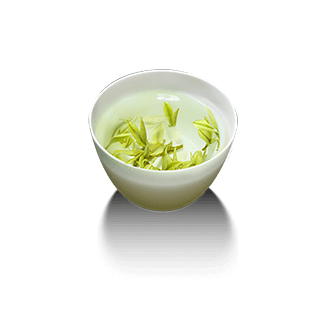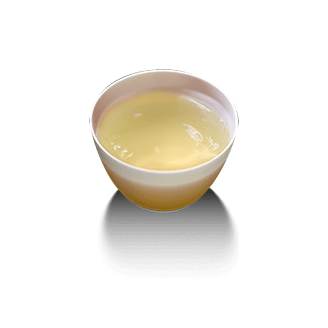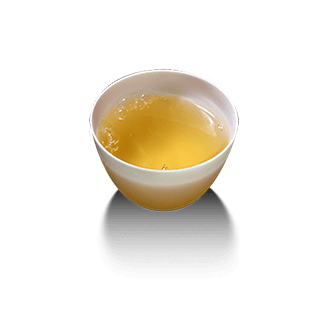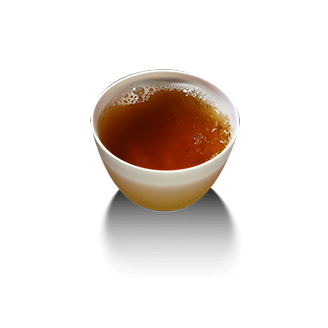

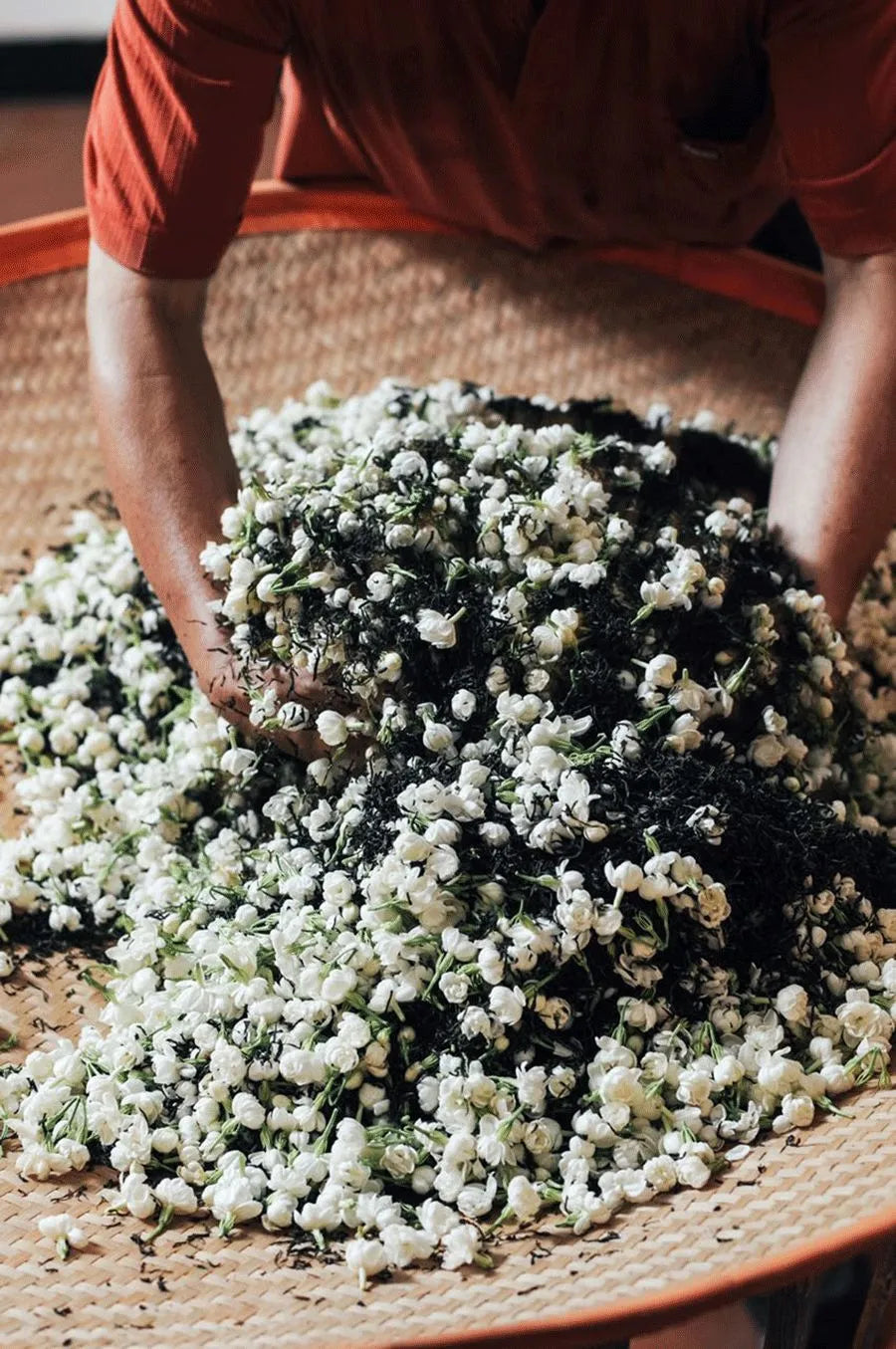
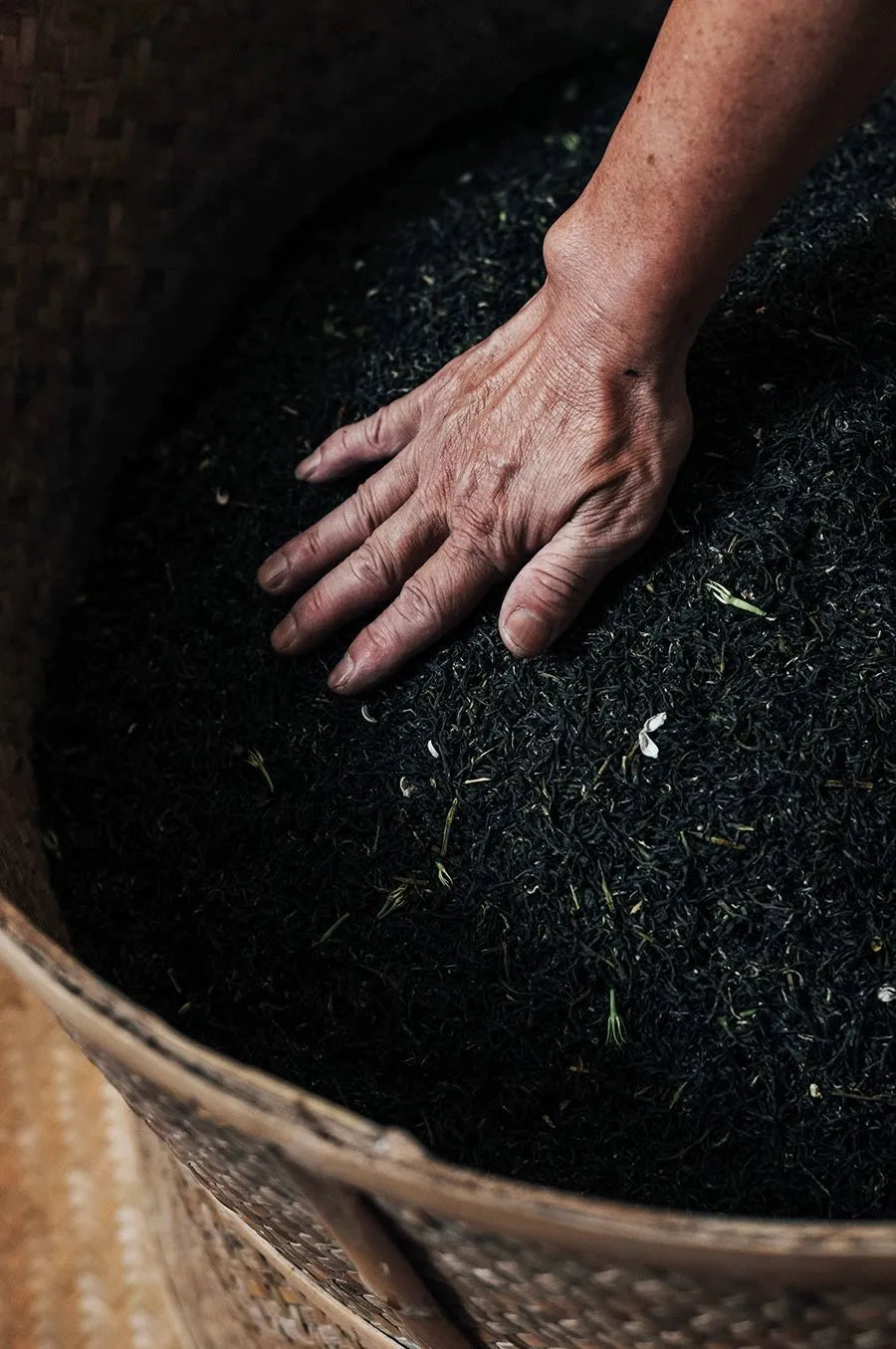
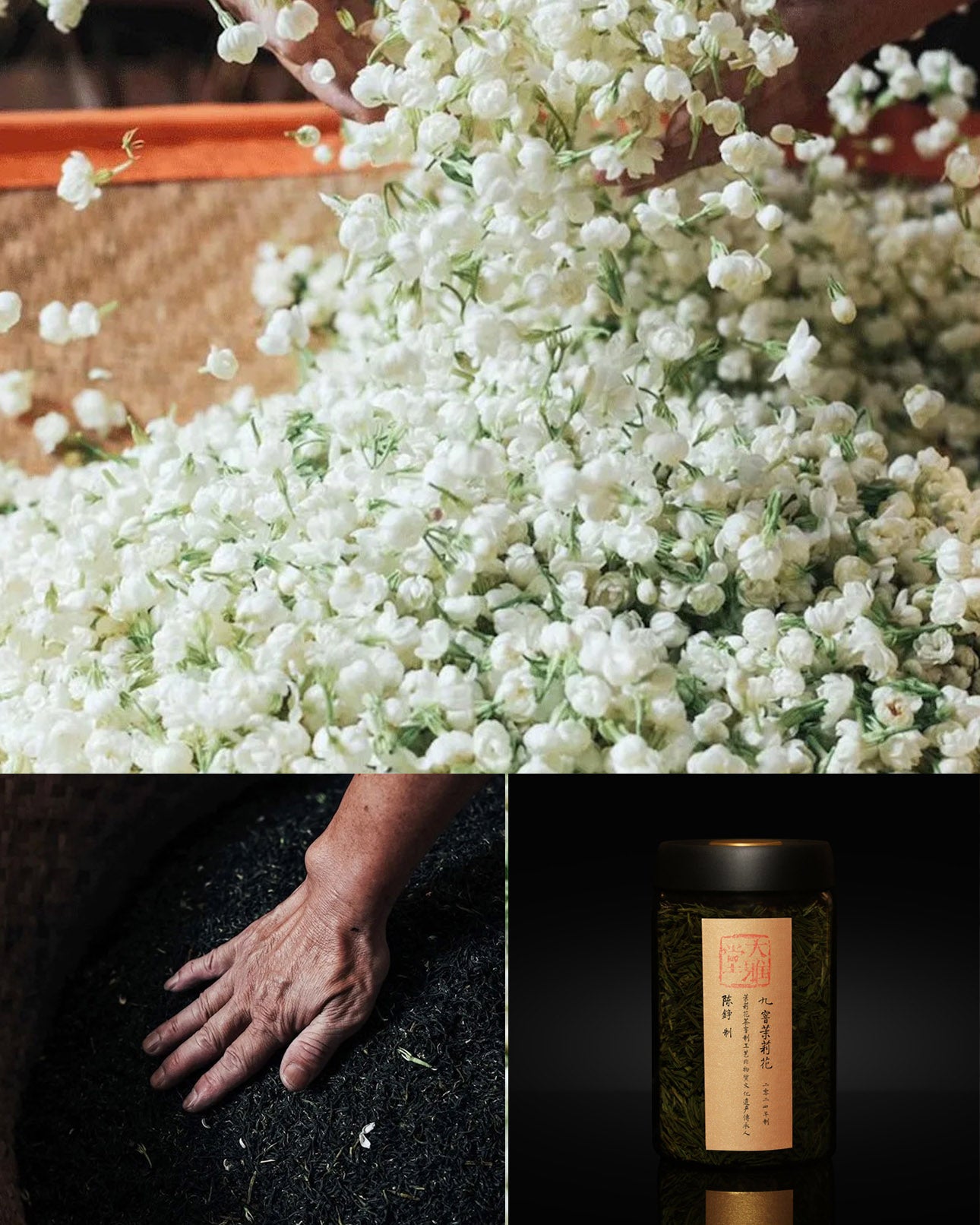

Fuzhou Jasmine Tea







Fuzhou Jasmine Tea
Fuzhou Jasmine Tea
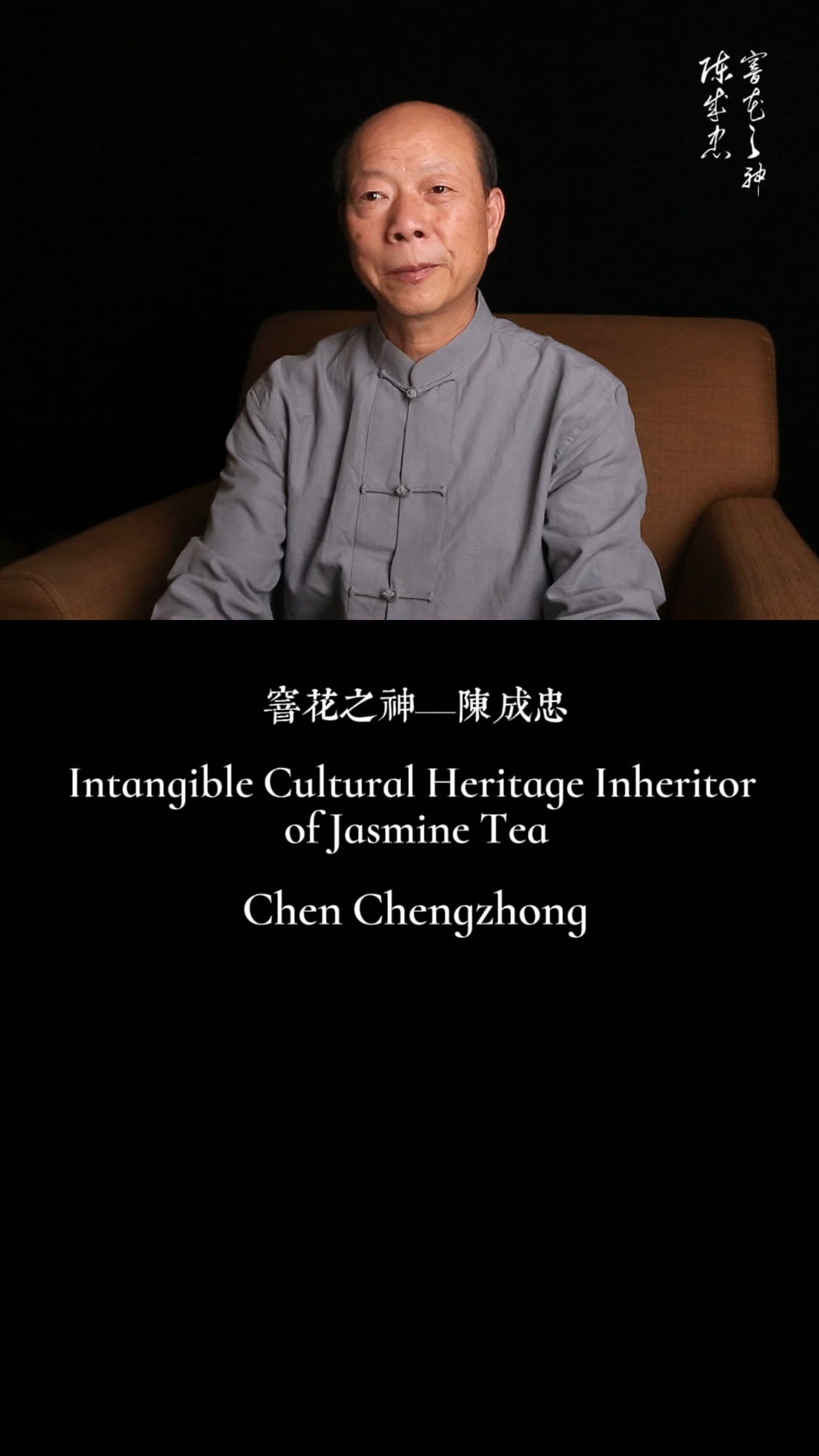
That was 10 years ago with Dayatang's "Intangible Cultural Heritage Journey," where we traveled all the way to Fuzhou, the "Banyan City." The entire city was permeated with the delicate fragrance of jasmine, and jasmine tea is the city's fragrant calling card.
On this trip, we visited Chen Chengzong, an inheritor of the intangible cultural heritage of jasmine tea scenting techniques, for the first time. Before even met the elder, we could smell the rich aroma of jasmine tea from afar—that was the first time I realized that jasmine tea could be so refreshing.
At that time, Chen Chengzong was in high spirits. He and his son, Chen Zheng, warmly received warmly and introduced the jasmine tea craftsmanship in detail.
Chen Chengzong was born in Fuzhou, Fujian in 1950. He is not only an inheritor of the intangible cultural heritage of jasmine tea and a master of traditional craftsmanship, but also a senior national tea appraiser. At the age of 15, he entered the Fuzhou Tea Factory and has adhered to handmade tea making for nearly 60 years. He is one of the few tea masters in the industry who can independently complete the entire process from "tea base preparation to scenting with flowers".

The jasmine tea made by Mr. Chen and his son is completely different from ordinary flower tea. Its aroma is rich and pure, with an extremely high and long-lasting freshness; what is most impressive is the green tea base they use—the buds and leaves are plump and full of nutrients, resulting in a mellow and sweet taste that is on a completely different level from ordinary tea bases on the market. I have stored their tea before, and even after several years, its quality has remained almost unchanged.

Sadly, in 2023 we learned of the passing of Master Chen Chengzong. The Chinese tea world lost a giant, and we deeply mourn his passing. May he rest in peace.
Although Mr. Chen Chengzong has passed away, his exquisite tea-making skills have been passed down to his descendants, with his son Chen Zheng being the core inheritor.
Chen Zheng has inherited his family's culinary skills, and his masterpiece is the Nine-Scented Jasmine Tea. Just as the ancient saying goes, "The jasmine scent is the most exquisite, ranking first among all fragrances," this tea undergoes nine scenting processes: the tea leaves and jasmine flowers are layered and blended, allowing the tea leaves to fully absorb the jasmine's fragrance. Each scenting process is a profound dialogue between tea and aroma; after nine times, the jasmine fragrance in the tea reaches its peak, achieving a perfect fusion of tea flavor and floral aroma. This 2024 Nine-Scented Jasmine Tea, personally crafted by Chen Zheng, is a high-quality product that embodies traditional techniques and craftsmanship.
As the son of Chen Chengzong and the fourth-generation inheritor of the Chen family's traditional jasmine tea scenting technique, Chen Zheng is also an inheritor of the intangible cultural heritage of jasmine tea scenting. In the production process, he precisely controls every step: from tea leaf processing and fresh flower care to more than ten traditional procedures such as scenting, he strictly follows ancient methods while incorporating modern scientific approaches—optimizing the ratio of tea to flowers, scenting temperature, time, and arrangement—ultimately developing a more scientific and standardized production process.

The finished tea has floral fragrance without flowers in sight
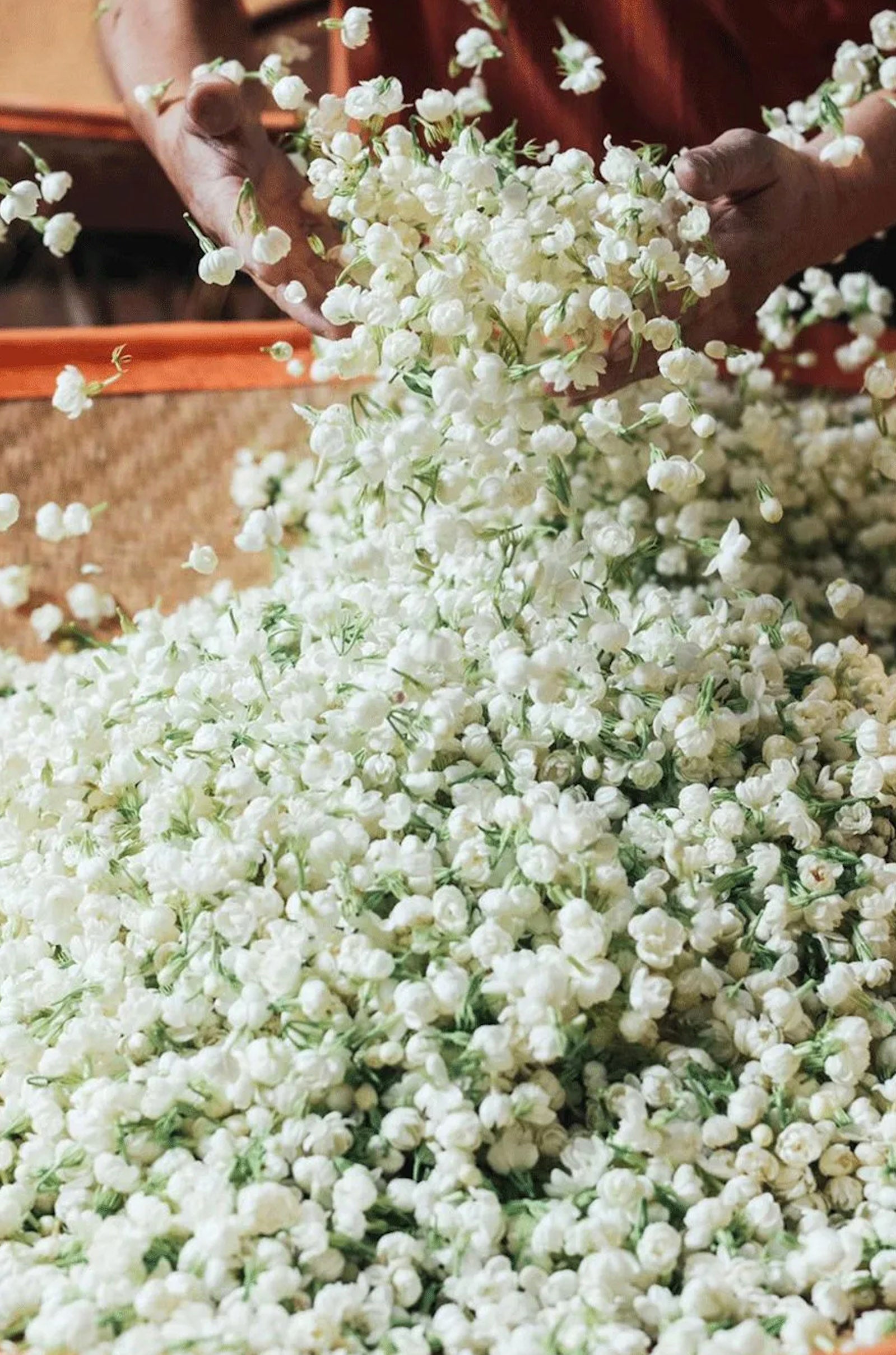
Selected from Fuzhou’s first batch of midsummer jasmine flowers, it is scented to create an extremely fresh and vivid aroma.

The tea base uses high-quality baked green tea made from one bud with two leaves of Fuding Dabao tea variety.
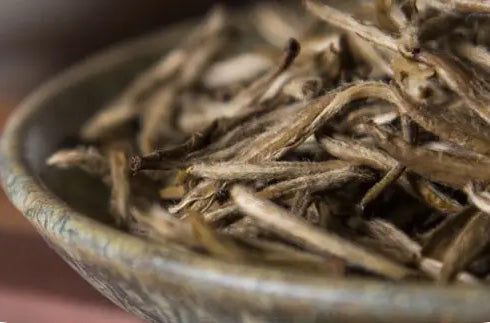
The tea base is made from high-quality Fuding Dahao one bud and one or two leaves of baked green tea.
Handcrafted by Chen Zheng,ICH Inheritor of Jasmine Scenting Craft
Appreciation of Nine-Scented Jasmine Tea
Scented to capture jasmine’s supreme fragrance, it ranks as the finest aroma in World.
Scent: Freshness directly reaches the senses
No need to sniff carefully! The rich, fresh, and pure aroma of Fuzhou jasmine tea wafts from afar, instantly awakening the senses and filling the mind and body with a sense of joy. The aroma is long-lasting and extremely pure, with a subtle hint of rock sugar sweetness, creating a clear and refined fragrance.
Taste: A match made in heaven between tea and fragrance
Clear and mellow on the palate, with a fragrant soup. Unlike the fragrance of jasmine from other mountains, the fresh floral aroma of Fuzhou blends naturally with the rich and robust taste of Fuding large-leaf green tea. The aftertaste is long-lasting and the lingering flavor lingers on the tongue, offering a full and complex flavor profile.
Color Observation: The Exquisite Presentation of the Inside from the Outside
Infusion color: After brewing, the infusion is light golden yellow, clear, bright, and crystal clear;
Dry tea leaves: tightly rolled, bright in color, covered with white down, and with uniform buds and leaves.
Tea base: the foundation of quality
It uses high-quality Fuding Dahao one bud and one or two leaves of roasted green tea base. The buds and leaves are plump and rich in internal substances, which not only ensures the mellow taste of the tea soup, but also complements and balances the fresh aroma of jasmine.
Jasmine: Fresh Soul
Only the earliest batch of jasmine flowers is used, and the pure white jasmine flowers are picked after 2 pm. The tea is scented at night, resulting in extremely high freshness and vitality. This is the key to giving the tea "pure and unblemished fragrance" and truly achieving the wonderful effect of "smelling the fragrance but not seeing the flowers".
Family craftsmanship, Nine-Scented Jasmine Craft
The core of the family's traditional "Nine-Scenting Process" involves layering and deeply blending tea leaves with jasmine flowers. The nine scenting processes lock in the fresh and delicate fragrance of jasmine within the tea leaves, preventing the aroma from evaporating too quickly and ensuring that the fragrance and tea are completely integrated. This results in a "fresh and lasting" aroma experience when tasting the tea.
Handcrafted by Chen Zheng,ICH Inheritor of Jasmine Scenting Craft
Nine-Scented Jasmine Tea
brewing
Daily drinking
Water temperature: Use hot water at 85-90℃, avoid boiling water (boiling water tends to scald the tea leaves, causing aroma volatilization and astringent taste).
Tea Dosage: Follow a 1:30 ratio — 5g of tea leaves paired with 150ml of water (roughly the capacity of a standard gaiwan).
Brewing Time: Steep for 30 seconds after the first water injection before serving; for subsequent infusions, extend the steeping time by 10-15 seconds each time, and the tea can be brewed 4-5 times in total.
Tea Rinsing: Thanks to the high cleanliness of the nine-round scenting process and the fact that the aroma is easily retained, a light rinse (quickly pour hot water over the tea and drain immediately) or direct brewing is recommended to avoid aroma loss.
Detailed appreciation
Utensils: White porcelain gaiwan is preferred (it does not absorb aroma, makes it easy to see color, and can clearly present the color and aroma of the soup).
Steps: First, warm the bowl, put in the tea leaves, and gently shake the gaiwan for 10 seconds to "awaken" the tea leaves and allow them to initially unfurl. Then, pour water at 85℃ around the bowl until it is 80% full. After 30 seconds, pour out the tea and divide it into cups to savor the complete experience of "first smelling the aroma, then observing the color, and finally tasting the flavor".
water quality
Choose qualified purified water; never use alkaline mineral water .
(For commercially available mineral water brands, their water sources and quality indicators vary. So-called "high-quality mineral water and mountain spring water" may cause loss of functional components and inhibition of aroma in tea.)
I:Effect of Alkaline Water on Green Tea
1. Effects on tea liquor hue:
green tea:
Under alkaline conditions, chlorophyll is easily destroyed (chlorophyll stability decreases at pH > 8.0) , causing the tea liquor color to easily change from bright green to yellow or dark yellow, resulting in turbidity , especially noticeable when brewed at high temperatures. Flavonoids (such as catechins) in green tea are easily oxidized in an alkaline environment, exacerbating the darkening of the tea liquor color.
black tea:
Theaflavins (bright orange-yellow) are easily oxidized to thearubigins (dark red) under alkaline conditions, and further generate dark brown, causing the soup color to change from bright red to dark and lose its transparency .
Other types of tea:
The color of oolong tea, white tea, and yellow tea may be darker due to alkaline water. The color of black tea (such as ripe Pu-erh) will become more turbid, and the color stability of aged aroma substances will also be affected .
2. Impact on taste and texture
Analysis reveals differences:
Tea polyphenols and caffeine: lead to insufficient concentration and bland taste . An alkaline environment inhibits the dissolution of tea polyphenols (bitter substances) and caffeine, reducing the bitterness of the tea soup.
Amino acids and sugars: Disruption of amino acid structure reduces the freshness and crispness.
Mineral influence: Alkaline hard water (containing more calcium and magnesium ions) combines with tea polyphenols to form insoluble precipitates (such as "cloudiness after cooling"), resulting in cloudy tea soup and a rough taste .
Balance of taste: It significantly affects the "richness" of tea soup for teas that rely on polyphenols to support their taste (such as raw Pu-erh tea and high-roasted rock tea), with no noticeable aftertaste and an overall taste that is bland and coarse .
3. Effects on aroma
Volatile aromatic substances: An alkaline environment may accelerate the degradation or transformation of aromatic substances (such as aldehydes and alcohols), resulting in a single aroma profile, especially in light-aroma teas (such as jasmine tea and Anji white tea), where the floral fragrance dissipates easily and may even develop a "mushy" taste.
Aged aroma and woody aroma: For fermented teas such as black tea and aged Pu'er, alkaline water may slightly highlight the aged aroma (pH>8.0) and suppress the fruity or honey aroma.
II: The adaptability of different types of tea to water quality
1. The interaction between the physicochemical properties of water and tea components
- Hard water (>120 mg/L CaCO₃) : Calcium ions combine with tea polyphenols to form precipitates, reducing the astringency of tea soup (EGCG binding rate can reach 23%), but losing antioxidant activity (Food Chemistry, 2018); Magnesium ions promote caffeine dissolution, and every 1 mg/L increase in magnesium can increase the caffeine concentration by 0.8% (Journal of Agricultural and Food Chemistry, 2020).
- Soft water (<60 mg/L CaCO₃) : Theaflavin dissolution rate increased by 12%, and the brightness of the tea soup increased (L* value increased by 3.2), but the amino acid extraction efficiency decreased (Food Research International, 2019).
2. Supported by scientific experimental data
- Longjing green tea brewing experiment (TDS = 50 vs 300mg/L) : The amino acid content of the tea soup in the soft water group (1.2mg/mL) was significantly higher than that in the hard water group (0.8mg/mL), but the caffeine content was 18% lower (China Tea Processing, 2021); Sensory evaluation showed that the freshness score of the soft water group was 1.7 points higher (out of 9), while the body of the hard water group was 0.9 points higher.
- Research on water quality suitability for Wuyi rock tea : Water containing trace amounts of sulfate (20-50 mg/L) can increase the dissolution of cinnamaldehyde, a characteristic aroma compound of cinnamon, by 24% (GC-MS detection), and significantly enhance the rocky aroma (Tea Science, 2020).
3. Water quality selection recommendations (based on tea)
| Tea | Ideal TDS | Recommended pH | Key ion requirements |
| F.T.L. Green Tea | 30-80mg/L | 6.8 | Ca²⁺<15mg/L, Mg²⁺<5mg/L |
| F.T.L. Oolong Tea | 80-150mg/L | 7 | HCO₃⁻ 40-60mg/L |
| F.T.L. Black Tea | 100-200mg/L | 6.8 | K⁺ 2-5mg/L, SiO₂ 10-15mg/L |
| F.T.L. Pu'er Tea | 50-120mg/L | 6.8 | Fe³⁺ < 0.1 mg/L |
4. Examples of the impact of special water quality
London tap water (high hardness) : When brewing black tea, the formation of oxalool-calcium complexes leads to "cold turbidity" appearing 30 minutes earlier, with the turbidity (NTU) of the tea reaching 12.5, which is significantly higher than that of the soft water group (NTU = 4.3) (Food Hydrocolloids, 2019).
Kagoshima hot spring water (containing sulfur) : Sulfides react with theaflavins to form methyl flavonoids, which reduces the umami intensity of sencha by 37% (*Journal of the Japanese Institute of Food Science and Technology, 2022).
One Region, One Tea: Water quality from specific local water sources enhances the color, aroma, and taste of local tea, but using local water requires systematic professional knowledge and high costs. For non-professionals, mastering the basic principles of "softened purified water + temperature control" is far more practical than pursuing famous springs from the origin.
The precise matching of water and tea is essentially a dialogue of geographical genes, which needs to be built on a multidisciplinary system of geology, food chemistry, heat transfer and other disciplines, and cannot be covered in just a few lines of web pages.
The UK-based AquaSim laboratory has simulated 12 core indicators of Hupao Spring. However, it lacks the original spring's microbial community (such as Nocardia tea-loving bacteria), resulting in a 27% difference in post-fermentation flavor. In addition, the operation is complex: it requires mastering the "listening to the spring while boiling water" method (stopping the fire immediately when the water first boils), and a temperature error of more than 3°C will disrupt the flavor balance.
The charm of tea ceremony lies in appreciating what suits one's taste.
A pot of purified water is enough.
Don't be trapped by the mystique of water quality.
Package
"Forged Through Thousands of Hammers" Handcrafted Pure Tin Can
Height: 15 cm | Diameter: 11 cm | Net Weight: 250 g
Crafted by Sheng Yiyuan, ICH Inheritor of Yongkang Tin Carving.
The can body is shaped through thousands of manual hammer strikes, boasting a delicate and warm texture. Each hammer mark—varying in depth—stands as a unique imprint, a vivid testament to the warmth of handcraftsmanship and the profound meaning of intangible cultural heritage ingenuity.
The interior is finely polished using precision numerical control (NC) technology, ensuring a smooth and burr-free surface. The lid and mouth, crafted with high-precision techniques, achieve an airtight seal. This fusion of handcrafted warmth and modern technical precision preserves ancient charm while guaranteeing practicality.

Height: 15 cm | Diameter: 11 cm | Net Weight: 250 g

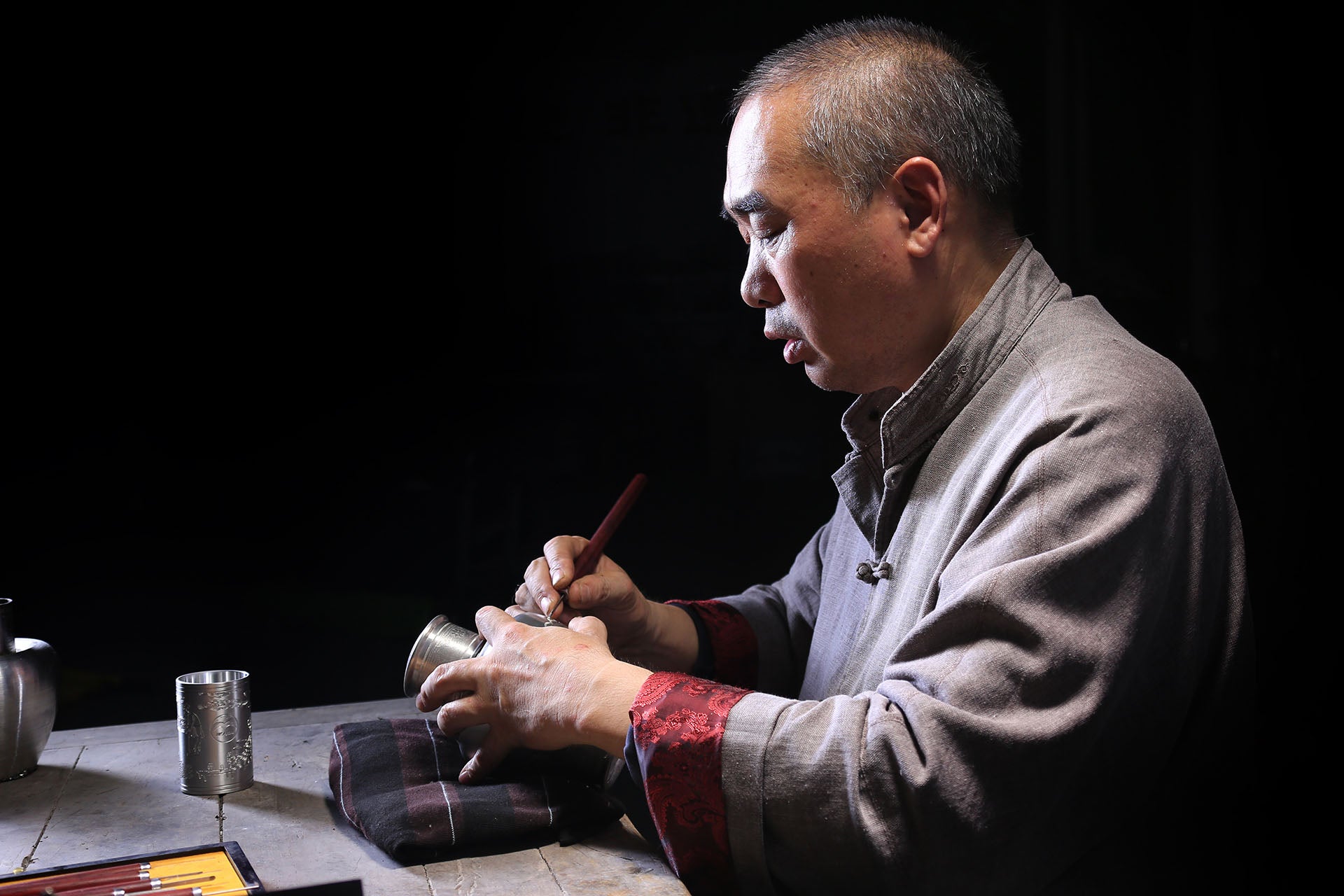
Sheng Yiyuan,ICH Inheritor of Yongkang Tin Carving
Storage
Lock in the fresh and vivid aroma of nine rounds of scenting
The aroma and taste of nine-scented jasmine tea are easily affected by temperature, humidity, and odors. Storage should follow the principles of "moisture prevention, odor prevention, light avoidance, and temperature control," specifically paying attention to the following four points:
container
Tin cans are preferred. Purple clay pots or porcelain pots with sealing rings (tin pots have strong sealing properties). Purple clay is breathable and does not absorb fragrance, effectively isolating it from external moisture and odors; avoid using plastic containers (which easily retain odors) or unsealed containers. Transparent glass jar (transparency will accelerate the oxidation of tea leaves).
temperature
Store in a cool, dark place below 10℃, away from heat sources such as radiators and stoves.
Humidity: Maintain ambient humidity at 50%-60% ( high temperature, Moisture can cause the fragrance to evaporate and lead to mold growth.
Avoid light
Keep away from direct sunlight or strong light, as light can damage the nutrients in tea leaves and cause them to lose their aroma.
Odor
Tea leaves are highly absorbent of odors and should be kept away from sources of odor such as kitchen fumes, perfumes, and spices.
Reduce opening
After each use of tea, immediately tighten the sealed lid to reduce the number of times the tea leaves come into contact with air (repeatedly opening the can will cause the tea leaves to absorb moisture and lose their aroma).
Shelf life
Under proper storage conditions, nine-scented jasmine tea can be stored for 1-2 years. The first 6 months are the best period for aroma and taste, and it is recommended to drink it during this period to better experience its core flavor of "freshness and lasting freshness".
Practical experience has proven that, under conditions of maintaining a temperature of 5 degrees Celsius and avoiding light, the product will still retain excellent quality for 5 years.






